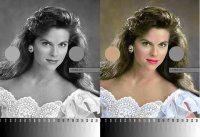- Joined
- Dec 20, 2010
- Messages
- 978
- Reaction score
- 1,007
- Points
- 233
- Location
- Ottawa, CANADA
- Printer Model
- Canon Pro-100, and Epson 3880
Now that you‘ll taken out that darn checker board this thread could go on for years.
I see with my eye and use my brain to define what exactly I am looking at.. The Hat..
Look at the checker board!
Think of a problem.
You are getting t-i-r-e-d.
You are feeling s-l-e-e-p-y.
Get the idea? - works every time, and I always get a good nights sleep.
RS


